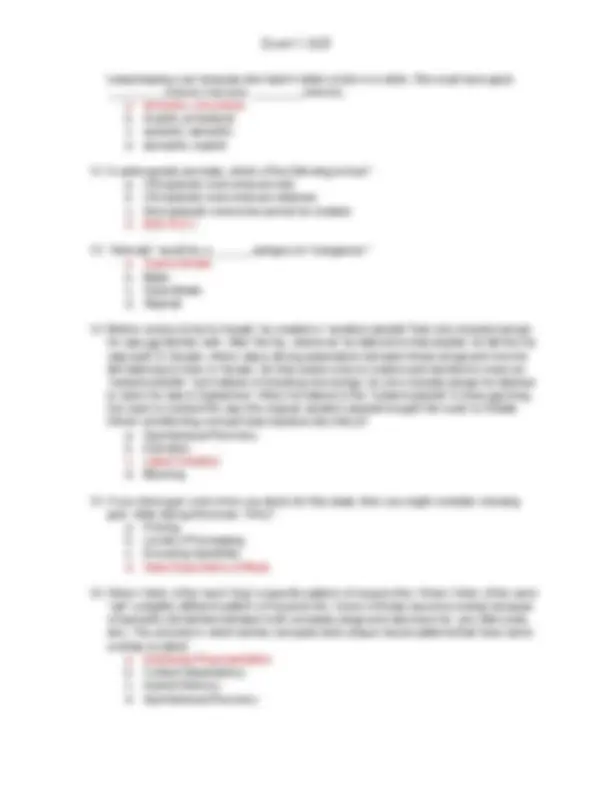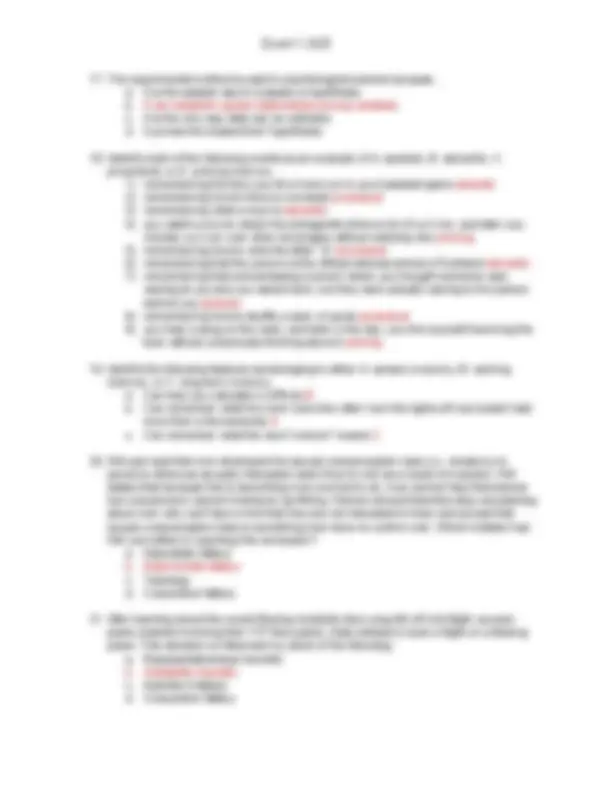1. Which of the following statements about the brain is FALSE?
a. We are capable of using only a fraction of our brain.
b. The brain is organized in a hierarchical fashion that reflects how it evolved.
c. The brain's outermost layer, the cortex, is responsible for complex thought.
d. Different parts of the brain are specialized to do different tasks.
2. Which one of the following is TRUE about mental representations of reality?
a. They do not always match what is in the external world
b. Every human has the same perceptual experience of reality.
c. They are formed in a way that matches with the realist perspective.
d. They are guided exclusively by bottom-up processes.
3. Some years ago, a young child by the name of Cameron Mott made headlines across
the U.S. because surgeons had to remove the right side of her brain in order to control
horrible seizures she was experiencing. When she woke up after the surgery, Cameron
experienced paralysis in the left side of the body. But after four weeks of physical
therapy, she could move about almost normally and showed no deficits in IQ. She even
said she wanted to grow up to be a ballerina! This example, where the brain is able to
recover from damage, illustrates the phenomenon of...
a. Dualism
b. Neural plasticity
c. Synaptic pruning
d. Hemispatial neglect
4. SunYoung recently suffered damage to a part of her brain and surgeons had to remove
this portion. After the surgery, SunYoung has difficulties forming new memories of events
that happen in her life. Based on this information, which part of SunYoung's brain was
likely removed during surgery?
a. Hypothalamus
b. Basal ganglia
c. Gustatory cortex
d. Hippocampus
5. Henry is using heart rate to measure stress levels in NYU students that are caused by
their morning commute to campus using the crowded subway. His colleague Mari points
out to him that a person's heart rate is also influenced by factors completely unrelated to
stress, such as the copious amounts of caffeine NYU students consume in the morning.
In other words, his colleague Mari is pointing out that...
a. The measure of stress might not be valid in this context.
b. The measure of stress might not be reliable in this context.
c. The measure of stress might be affected by reactivity in this context.
d. The measure of stress might be influenced by demand characteristics in this
context.
6. Julia is listening to Taylor Swift’s “Blank Space” and cannot, for the life of her, understand
the lyrics. She keeps hearing “got a long list Starbucks lovers” and has concluded that
that’s what Taylor must be saying. This is an example of . She
later learns that the lyrics are actually “got a long list of ex-lovers.” Now that she knows
that, she only ever hears the correct lyrics. This is an example of .














